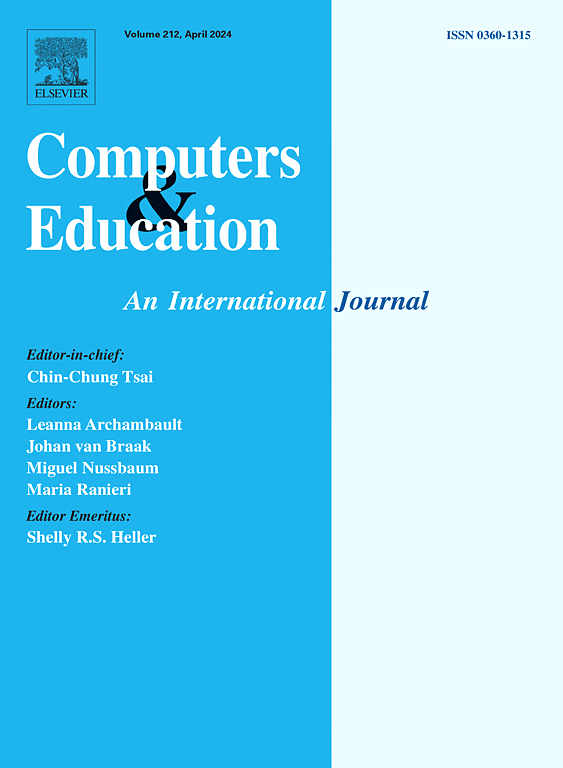自适应电子学习系统中学习者模型的开发与技术:系统综述
IF 8.9
1区 教育学
Q1 COMPUTER SCIENCE, INTERDISCIPLINARY APPLICATIONS
引用次数: 0
摘要
自适应电子学习系统(AeLS)兴起于 20 世纪 90 年代末,它通过满足个性化学习体验的需求,为 "一刀切 "的方法提供了另一种选择。这些系统通常由五个要素组成,包括领域模型、媒体空间、适应模型、用户界面和学习者模型。尽管过去十年来学术界对这一主题的兴趣与日俱增,适应技术也发展迅速,但在研究学习者特征和特征识别技术的综述方面仍存在很大差距。为了弥补这一空白,我们对 2013 年至 2023 年期间报道的共 57 项研究进行了系统综述,以全面概述自适应电子学习系统研究的当前趋势。虽然该综述提供了近期研究中使用的技术,可作为建立学习者模型的参考,但我们的综述显示,有关学习者模型开发的研究很少,尤其是那些对适应性技术使用的理论或经验进行了明确论证的研究。我们建议在学习者模型中纳入多种相关的学习者特征,并提供选择这些特征的明确理由。我们还建议,未来的研究应考虑将适应性评估更广泛地纳入学习者学习策略。本文章由计算机程序翻译,如有差异,请以英文原文为准。
Development and techniques in learner model in adaptive e-learning system: A systematic review
Adaptive e-learning systems (AeLS), which emerged in the late 1990s, offer an alternative to the 'one-size-fits-all' approach by addressing the demand for individualized learning experiences. These systems typically consist of five elements, including a domain model, a media space, an adaptation model, a user interface, and a learner model. Despite the increasing academic interest in this topic and the rapid development of techniques for adaptation over the past decade, there remains a significant gap in reviews that investigate learner characteristics and the techniques used for characteristic identification. To bridge this gap, we conducted a systematic review with a total of 57 studies reported from 2013 to 2023 to provide a comprehensive overview of the current trends in adaptive e-learning system research. While this review may serve as a reference for setting up a learner model as it provides the landscape of techniques utilized in recent studies, our review revealed a scarcity of research on the development of the learner model, particularly the studies that share clear theoretical or empirical justification of the techniques used for adaptation. We recommend incorporating multiple relevant learner characteristics in learner model and providing clear rationales for selecting these characteristics. We also suggest that future research should consider incorporating adaptive assessment more extensively in AeLSs.
求助全文
通过发布文献求助,成功后即可免费获取论文全文。
去求助
来源期刊

Computers & Education
工程技术-计算机:跨学科应用
CiteScore
27.10
自引率
5.80%
发文量
204
审稿时长
42 days
期刊介绍:
Computers & Education seeks to advance understanding of how digital technology can improve education by publishing high-quality research that expands both theory and practice. The journal welcomes research papers exploring the pedagogical applications of digital technology, with a focus broad enough to appeal to the wider education community.
 求助内容:
求助内容: 应助结果提醒方式:
应助结果提醒方式:


